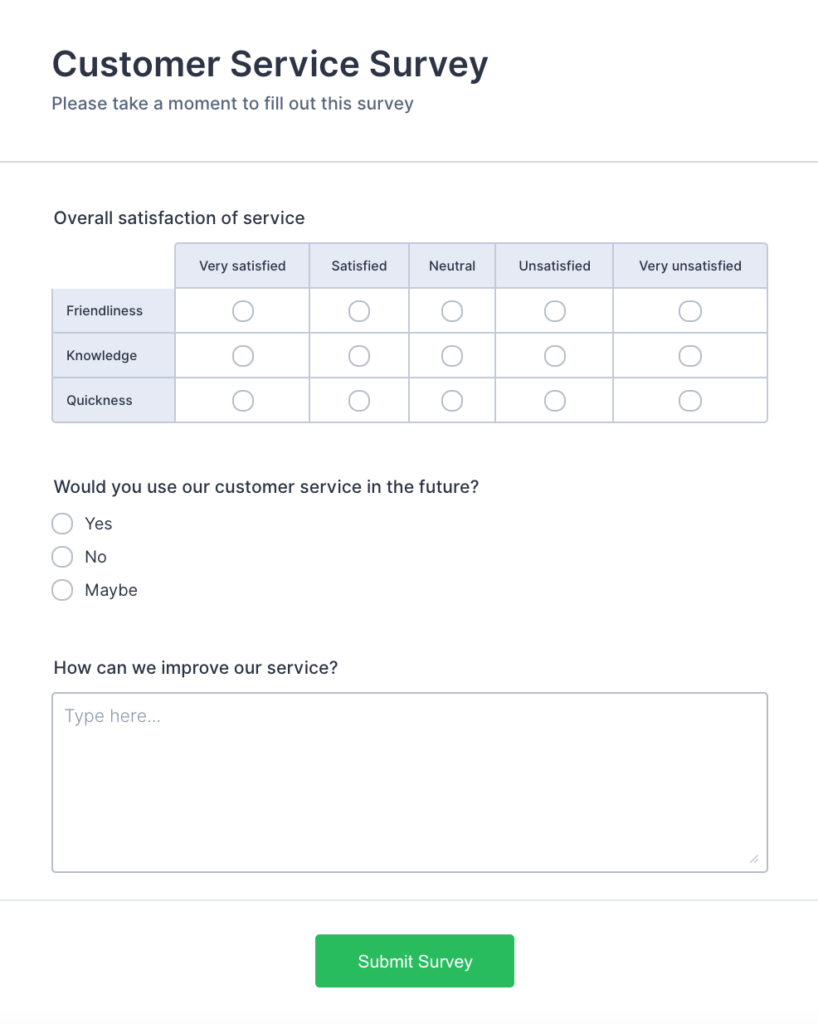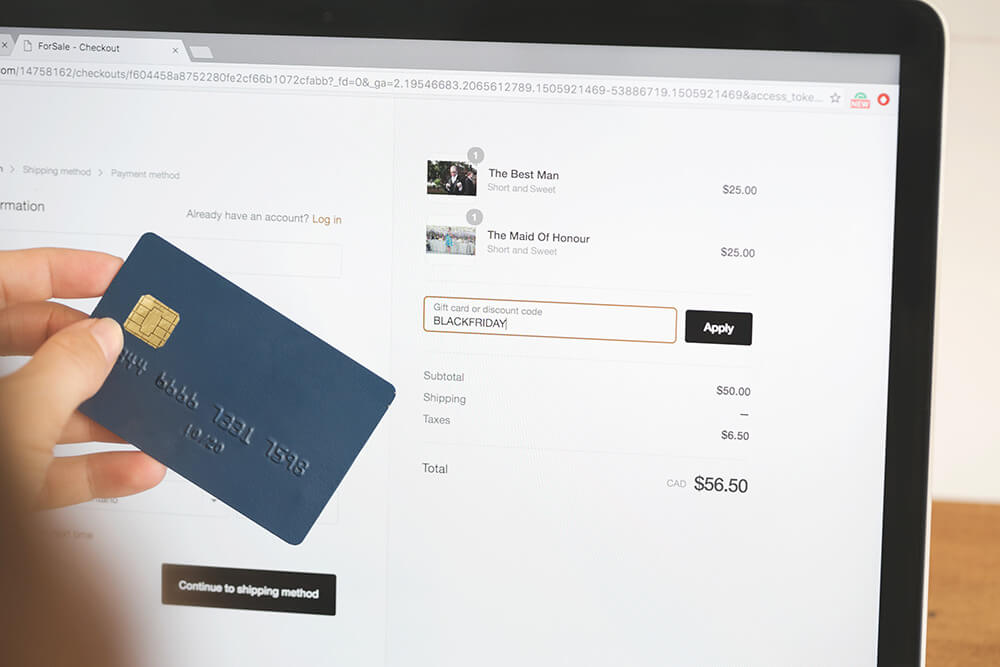When most of us think about customer data, we tend to think of KPIs that give us more insight into how we’re performing. How much is each customer worth to us? What are the costs to win a new customer? These basic metrics are important to your business because they help define your fees, optimize your funnel, and uncover opportunities to become more profitable. But this is not what we mean with customer data in this article.
The customer data I’m referring to are the juicy insights about your customers that allow you to bring your brand-to-customer relationship to a new level and develop a mutually beneficial experience.
You believe you have something of value that your customers need, and we need to confirm or adjust that hypothesis.

Why gathering customer data is your ticket to successful marketing.
Your customers’ needs are constantly evolving, and the challenges they face are constantly changing in a market where new solutions are introduced every day.
Most sales are not closed after just one interaction, and this requires us to gradually build a more trusting relationship with customers.
By having conversations with your customers, you gain a better understanding of what makes them tick and what they struggle with, so you can serve them more relevant content and solutions.
A few other reasons why your business needs to collect customer data are:
- You can adjust your tonality and language to appeal more to your audience and craft a more personalized experience.
- It’s an opportunity to target your customers with more relevant and enticing offers.
- Storing meaningful data about your customers enables you to segment them with a purpose: to extend their lifetime value and keep them coming back for more.
- To identify what platforms they spend most of their time on, so you can meet them where they’re at and increase engagement on these platforms more easily.
Knowing the story and narrative behind your customers sets you up to stay ahead of your competition.
So how do we actually gather this data?
Two ways to collect customer data
There are numerous ways to collect customers’ data and insights. The key is to figure out which methods generate the insights you need to support reaching the targets you have for your business.
Generally, you can ask your customers or track their behaviour with analytics tools.
1. Ask your customers
Directly talking to your customers is ultimately the best way to look into their minds and see how they think about your products and services from their unique perspective.
Before taking any of these approaches, pause and take a moment to think about what is most important to focus on.
You might want to:
- Increase your monthly sales from traffic you generate through Instagram.
- Boost customer retention on specific pages on your website.
- Find out why sales have dropped for a particular customer segment.
Whatever it is, having this upfront knowledge will help you formulate questions that are more relevant to the challenges that are currently the most pressing in your business.
Interviews
Get in the same room or on a video call with a few customers, and give them the chance to share their thoughts and concerns. Interviews can be a perfect method if you’re looking to improve your products or offers.
Asking as many open-ended questions in a setting like this will give you the biggest bang for your buck. And make sure you leave enough space for what you do not know in these questions.
Surveys
Surveys are a powerful method that allows us to ask a series of specific questions to validate future product ideas or identify flaws in your services. We can execute them on a much larger scale. Now, these surveys can easily be squeezed into your email series or integrated through a slide-in modal at the bottom of the user’s screen without interrupting their experience.
One other approach is to present your customers with a contest on social media, and give them a chance to win a discount, gift card or extended trial period in return for completing your survey. This is mostly used to gain more followers and increase engagement, but could also work to increase survey submissions.
You’ll find out what frustrates them, why they did or did not buy your product, or why they chose to leave you for a competitor.
Surveys with a healthy variety in types of questions perform by far the best.
Types of questions you can ask:
- Rating scale questions
Allowing the customer to rate their experience to uncover satisfaction rates. - Binary scale questions
Limiting the response to two choices. - Nominal questions
This type of question explores different categories of answers. For example, it can help you identify what kind of subscribers receive your emails or website visitors use your website. - Likert scale questions
Get more subjective data about how your customers feel about the quality of customer support or service. - Semantic differential questions
Similar to the Likert scale questions, but different in the way that it describes the responded attitude in more detail, rather than just agreeing or disagreeing. - Open-ended questions
Great for gathering ideas and identifying problems you never knew existed.

Customer satisfaction survey example that uses Likert scale, Binary scale and open-ended questions
To get the best results, here are some more tips you might want to read through before putting together a survey:
- Avoid asking more than one question at a time.
Questions that ask respondents to evaluate more than one concept, known as double-barrelled questions, are difficult to answer and therefore lead to responses that are difficult to interpret. - Questions written in simple and concrete language have a much higher chance of being understood correctly.
If you already know a thing or two about your audience, consider their education level when formulating your questions. If you don’t have enough data, keep it plain and simple, and you’ll be on the safe side. - Be aware of the “acquiescence bias”.
When we use agree-disagree questions in our survey, we have a higher probability that the responses are skewed. Particularly the less educated or informed respondents tend to agree with such statements. They are more likely to acquiesce to the assertion than others. Instead, offer them a choice between alternative statements.
A few tools I would recommend that’ll help you create, distribute and collect survey results are Typeform, SurveyMonkey or SurveySparrow.
Ready to attract more customers?
We help brands like yours expand their social reach and attract more qualified leads by crafting marketing campaigns engineered for success. Get in touch with us and start generating results that have a tangible impact on your bottom line.
Schedule a callReviews
There is a lot to learn from online reviews. They allow you to understand common user experience and product issues.
The power of reading reviews actually lies in reading your competitor’s reviews. Document all the reviews where customers are either extremely satisfied or disappointed. Look out for statements such as ‘I wish…’ or ‘the only thing…’. This is a great way to differentiate yourself from your competition.
One catch is that when you use this approach, you’ll find yourself in a laborious and time-consuming task.
Thankfully, there are sentiment analysis tools—like Social Mention, Brandwatch or Repustate—out there that can take this off your plate and frankly do this job much more efficiently with more accuracy. They are programmed to evaluate the tone, intent and emotion behind each message. It makes me happy that AI is improving in areas like this, because it’s not a particularly appealing task for a human.
These types of tools are most powerful for brands that actively engage with their customers on social media, live chats and email.
2. Track their behaviour
Besides listening to what your customers say, it’s a good idea to back that data up with what your customers actually do. This type of data reveals insights like buying habits, frequency patterns, and the factors that influence their decision to buy something.
Tracking shows the how and asking shows you the why.
Website analytics
Where do your customers spend most of their time browsing your website? What do they exactly do when they’re there? Where do they click? This information gives you more clarity on your customer’s journey and where the biggest roadblocks are.
It can also tell you what customers are interested in, even if they don’t make a purchase. It will help you pinpoint where they come from—whether it’s from specific email campaigns, search engines, affiliates or third party sites.
A/B testing is another popular method to gather insights from sales pages, see what copy and imagery works best, and use that to increase your conversion rates. VWO or Crazy Egg are great tools to perform these tests with.
Google Analytics and Search Console should be the first tools you want to invest some time in. They are free and will provide you with some basic insights that you can use to build upon.
If you want to go above and beyond these basic data points and get visual heat maps of your web pages, consider looking at Hotjar. Hotjar is an intuitive tool that allows you to see what your users see. From full recordings including click, mouse movements, U-turns, and rage clicks.
Purchase history

Similar to website analytics, this information won’t give you enough to draw meaningful conclusions, but it can show where to look for issues.
What items are frequently bought together? How do discounts and other promotions affect sales?
By documenting purchase patterns, you create the opportunity to deliver timely and on-point up-selling and cross-selling suggestions.
Conclusion
As we’ve discovered, you can collect a lot of customer data. With all the tools available in the market, it’s easy to get overwhelmed and confused about what to do with it.
When going through this process, you’ll often uncover that you’ve focused on the wrong things, and that’s okay. Your learning is never over, and you should always test the data you have collected to find out what resonates with your users. In the end, your goal is to make things better for both your business and your customers.
In part two of collecting customer data, we’ll look at what we can actually do with this data. How do we make sense of it all?

